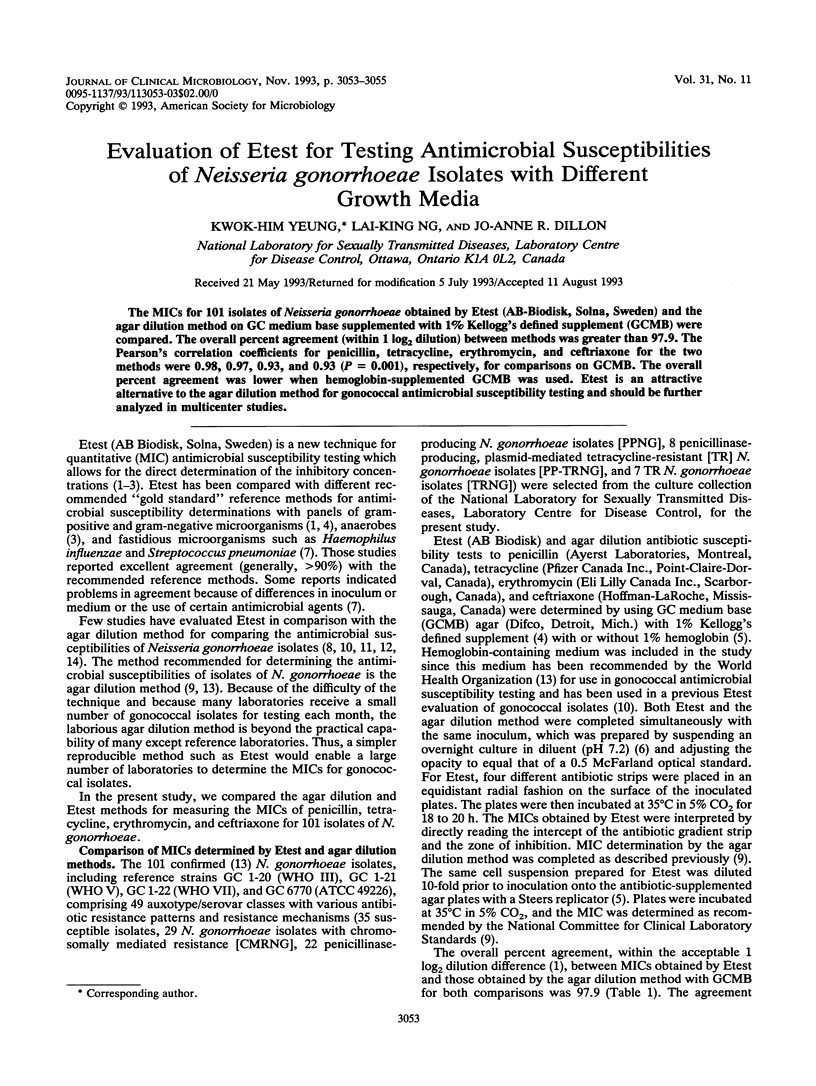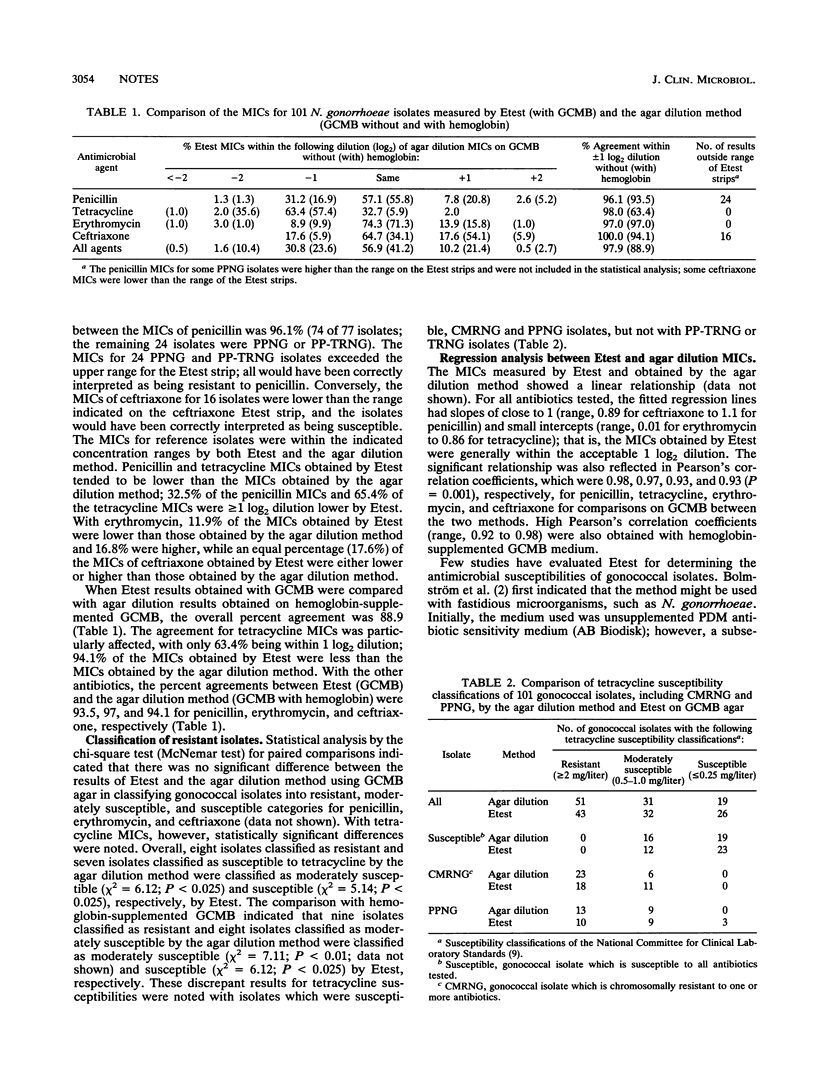Abstract
The MICs for 101 isolates of Neisseria gonorrhoeae obtained by Etest (AB-Biodisk, Solna, Sweden) and the agar dilution method on GC medium base supplemented with 1% Kellog's defined supplement (GCMB) were compared. The overall percent agreement (within 1 log2 dilution) between methods was greater than 97.9. The Pearson's correlation coefficients for penicillin, tetracycline, erythromycin, and ceftriaxone for the two methods were 0.98, 0.97, 0.93, and 0.93 (P = 0.001), respectively, for comparisons on GCMB. The overall percent agreement was lower when hemoglobin-supplemented GCMB was used. Etest is an attractive alternative to the agar dilution method for gonococcal antimicrobial susceptibility testing and should be further analyzed in multicenter studies.
Full text
PDF


Selected References
These references are in PubMed. This may not be the complete list of references from this article.
- Baker C. N., Stocker S. A., Culver D. H., Thornsberry C. Comparison of the E Test to agar dilution, broth microdilution, and agar diffusion susceptibility testing techniques by using a special challenge set of bacteria. J Clin Microbiol. 1991 Mar;29(3):533–538. doi: 10.1128/jcm.29.3.533-538.1991. [DOI] [PMC free article] [PubMed] [Google Scholar]
- Brown D. F., Brown L. Evaluation of the E test, a novel method of quantifying antimicrobial activity. J Antimicrob Chemother. 1991 Feb;27(2):185–190. doi: 10.1093/jac/27.2.185. [DOI] [PubMed] [Google Scholar]
- Citron D. M., Ostovari M. I., Karlsson A., Goldstein E. J. Evaluation of the E test for susceptibility testing of anaerobic bacteria. J Clin Microbiol. 1991 Oct;29(10):2197–2203. doi: 10.1128/jcm.29.10.2197-2203.1991. [DOI] [PMC free article] [PubMed] [Google Scholar]
- Dillon J. A., Tostowaryk W., Pauzé M. Effects of different media and methods of inoculum preparation on results of antimicrobial susceptibility testing of Neisseria gonorrhoeae by agar dilution. Antimicrob Agents Chemother. 1987 Nov;31(11):1744–1749. doi: 10.1128/aac.31.11.1744. [DOI] [PMC free article] [PubMed] [Google Scholar]
- Hendry A. T. Growth responses of Neisseria gonorrhoeae auxotypes to required amino acids and bases in liquid medium. Can J Microbiol. 1983 Oct;29(10):1309–1313. doi: 10.1139/m83-204. [DOI] [PubMed] [Google Scholar]
- Jorgensen J. H., Howell A. W., Maher L. A. Quantitative antimicrobial susceptibility testing of Haemophilus influenzae and Streptococcus pneumoniae by using the E-test. J Clin Microbiol. 1991 Jan;29(1):109–114. doi: 10.1128/jcm.29.1.109-114.1991. [DOI] [PMC free article] [PubMed] [Google Scholar]
- Sanchez M. L., Barrett M. S., Jones R. N. The E-Test applied to susceptibility tests of gonococci, multiply-resistant enterococci, and Enterobacteriaceae producing potent beta-lactamases. Diagn Microbiol Infect Dis. 1992 Jul;15(5):459–463. doi: 10.1016/0732-8893(92)90090-g. [DOI] [PubMed] [Google Scholar]


